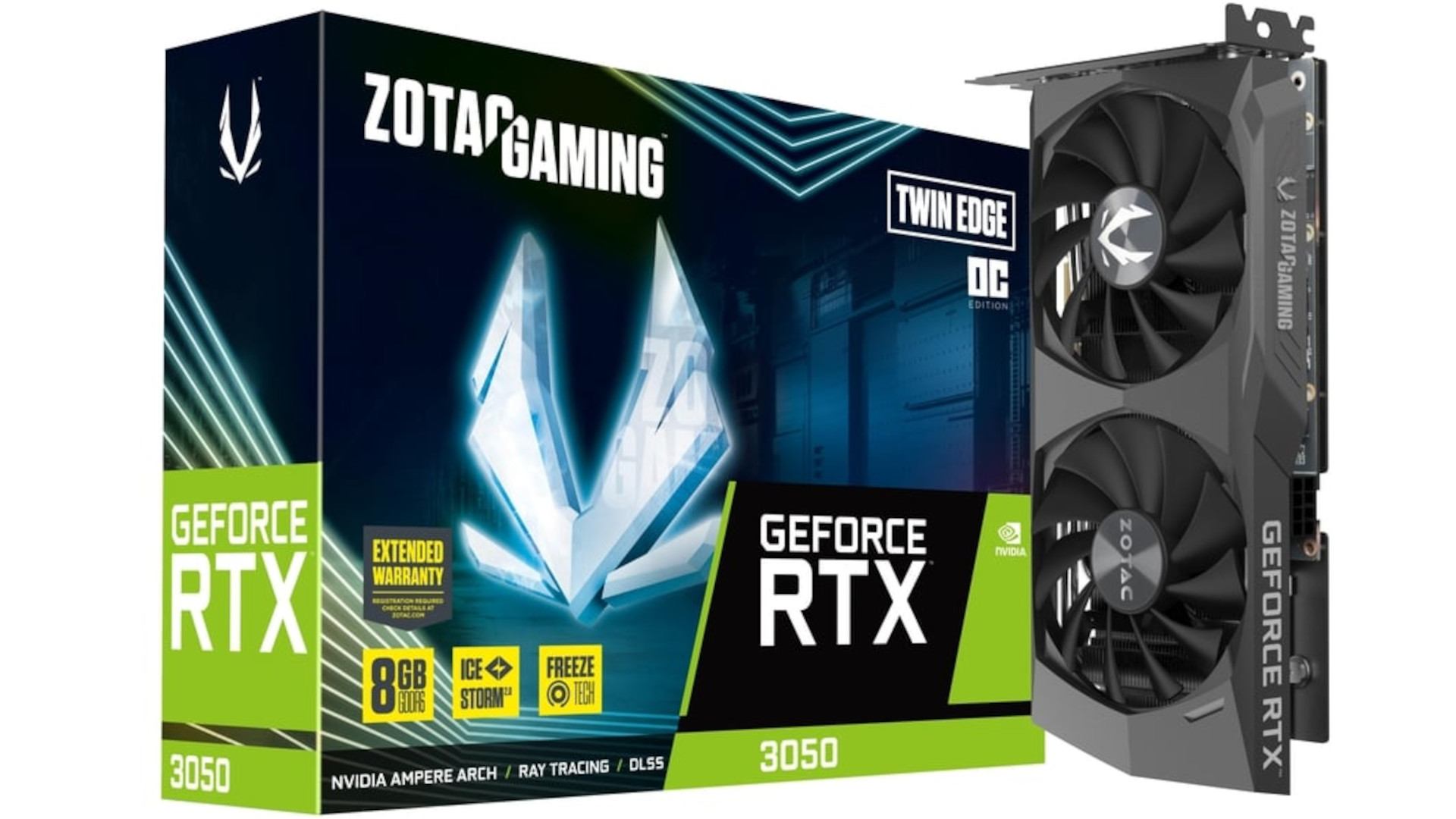One of the few GPUs that is now available for purchase at full retail pricing, or at least close to it, is the ZOTAC Gaming GeForce RTX 3050 Twin Edge OC. However, the suggested retail price for this specific Twin Edge OC Edition 3050 graphics card is $400, which is higher than the cost of a regular RTX 3050 desktop card.
The OC edition, as the name implies, offers performance that is roughly 2% overclocked for an additional $150. So, does it merit purchase?
In any case, the fact that it can be purchased at least makes it a very decent alternative. For now, older GPUs like the RTX 2060s will cost you at least $400 and maybe even up to $500.
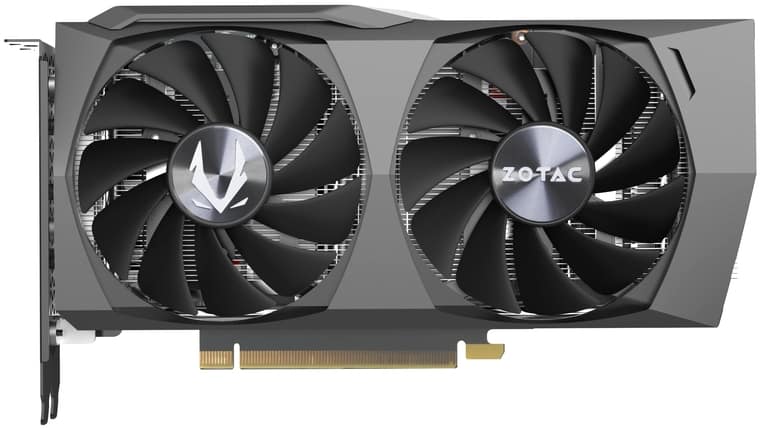
Since the RTX 3060 and other RTX 30-series cards are considerably more costly, the $400 Zotac RTX 3050 Twin Edge OC version is still preferable. The Zotac GeForce RTX 3050 Twin Edge OC version offers outstanding 1080p gaming performance, so that’s good to know.
I had no significant issues running a range of taxing AAA games at 1080p. In fact, I even combined a GPU with what would be considered a low-end CPU by 2022 standards, and the performance was at least as impressive. Although the performance across my test suite was far above 60 frames per second, I wasn’t expecting this GPU to handle a lot of the games that I tried.
ZOTAC Gaming GeForce RTX 3050 Twin Edge OC Unboxing
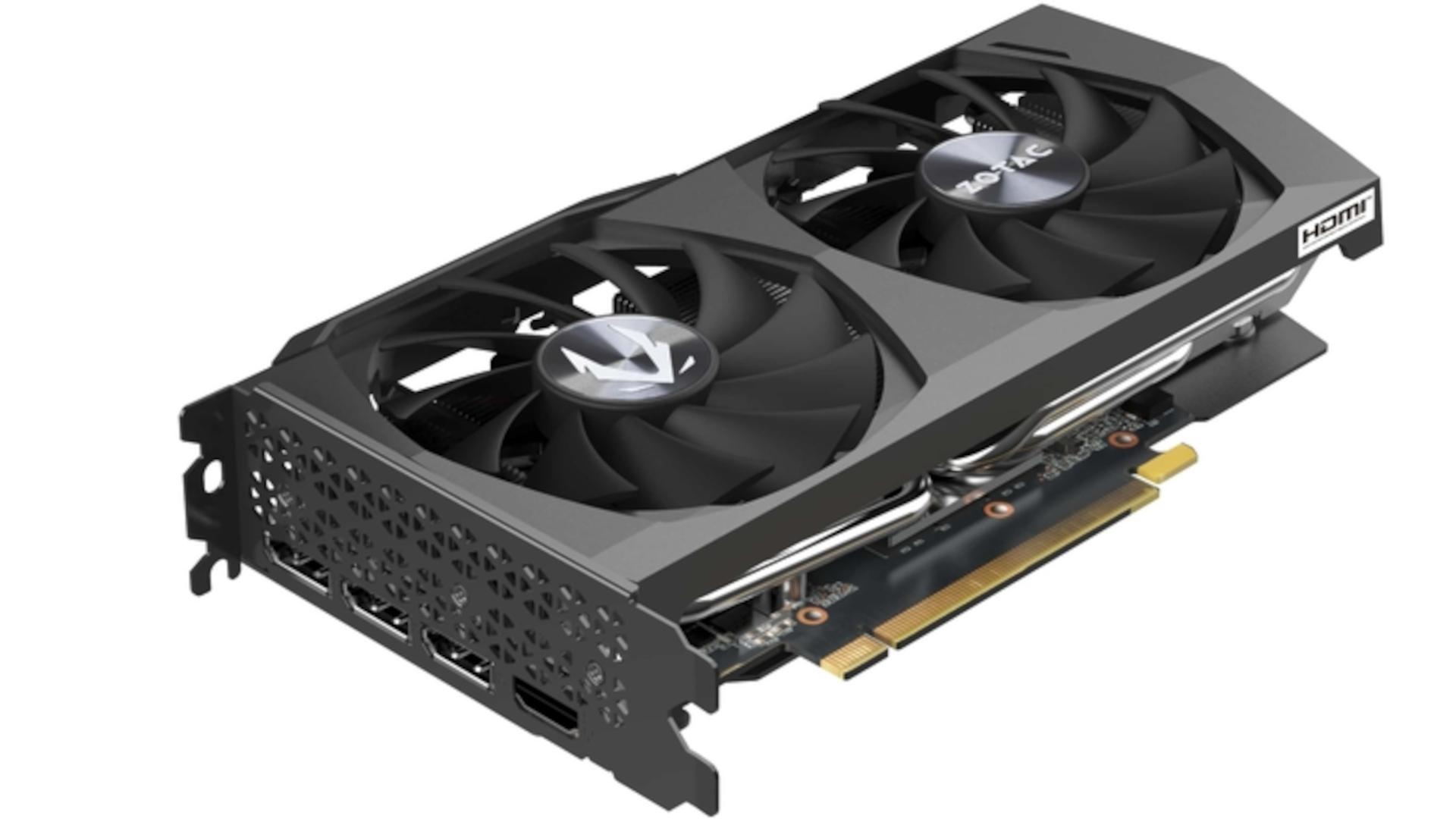
The ZOTAC Gaming GeForce RTX 3050 Twin Edge OC is a very small, two-fan card with an excellent fit in many cases, making it a great choice for ITX projects. The cooler differs from certain OEM design cards’ basic heatsink blocks in that it has two cooling fans and a heatsink with three heat pipes that pass through a variety of aluminum fins.
The RTX 3050 requires a least 550W power source and is supplied by an 8-pin PCIe power connection. I had hoped that the RTX 3050 wouldn’t need an extra power supply, however, that isn’t feasible because the PCIe x16 slot can only provide a maximum of 75W.
You’ll see 3 x DP and 1 x HDMI for the display output, which is very typical for graphics cards today.
When it comes to design, ZOTAC Gaming GeForce RTX 3050 Twin Edge OC is simple. The straightforward black and grey color scheme, two fan cooling, and absence of RGB add nothing in the way of aesthetics to a build, but it doesn’t stop me from being a major fan. The absence of RGB may seem like a step backward in this day and age, evoking GPU designs from the past, but I really find it to be a welcome shift.
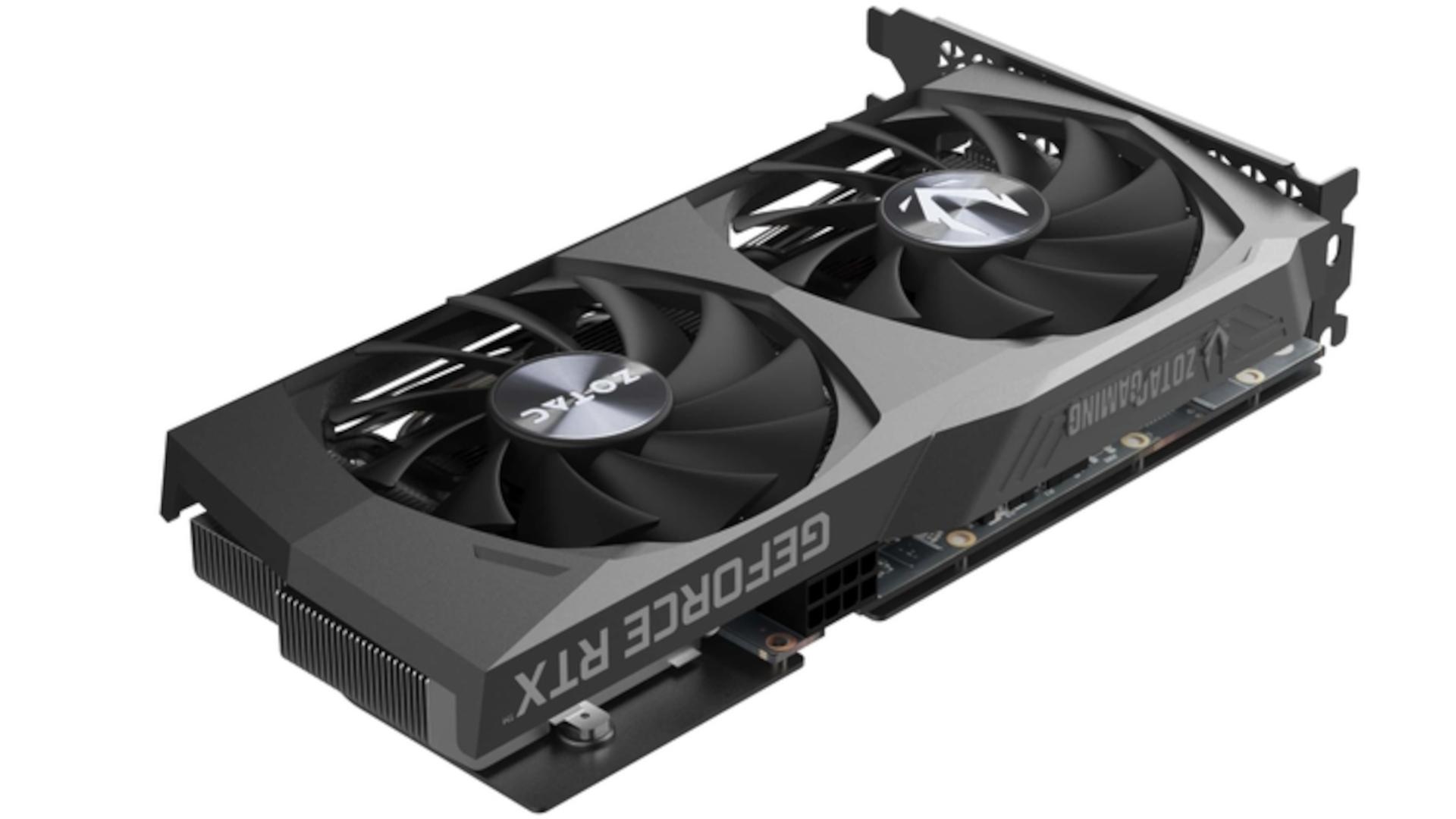
I like Zotac for designing a GPU that is just concerned with speed and usability, rather than using flashy looks to attract more buyers.
ZOTAC Gaming GeForce RTX 3050 Twin Edge OC Specifications
The Zotac RTX 3050 makes excellent use of DLSS, giving the vast majority of 1080p gamers that extra performance bump without breaking the budget.
Another useful feature included with the RTX 3050 is Nvidia Reflex, which improves communication between the CPU and GPU to reduce system latency. NVIDIA reflex is particularly significant in Esports games like CS:GO, Valorant, and COD Vanguard because it gives players an advantage when every millisecond counts.
The 8GB of GDDR6 RAM that Zotac’s RTX 3050 has is comparable to those of the RTX 3060Ti and 3070. The importance of having the appropriate quantity of video RAM was demonstrated by AMD’s recent 6500XT introduction.
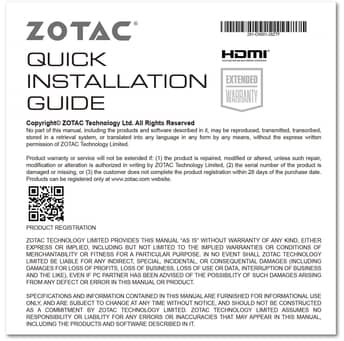
It is encouraging to see that Nvidia will not repeat the error made with a card that had excellent potential on paper but was held down by its meager 4GB of VRAM. The card has a very good boost clock speed of 1777MHz, which is slightly higher than that of the RTX 3060Ti and identical to Zotac’s Twin Edge RTX 3060.
Given these impressive on-paper specifications, it’s not surprising that the ZOTAC Gaming GeForce RTX 3050 Twin Edge OC performs so well in a variety of games at 1080p.
Thanks to the added advantages that the RTX line-up of cards has, the RTX 3050 fits into NVIDIA’s lineup perfectly and seems quite at home among the larger boys of the GPU industry. The Twin Edge OC and AMP versions, which have higher boost clocks of 1807 MHz and 1830 MHz respectively, are Zotac’s other two 3050 variants.
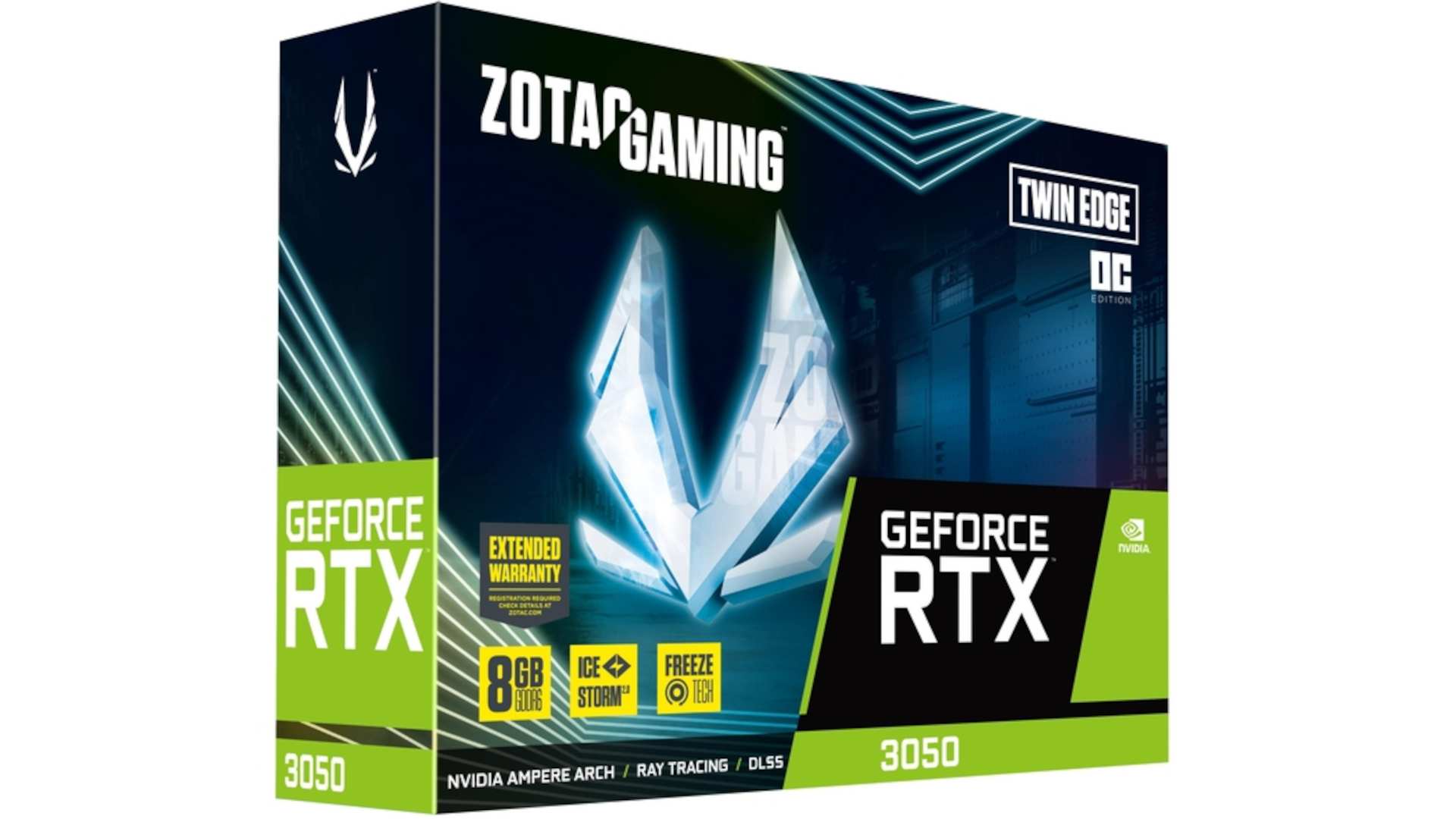
ZOTAC Gaming GeForce RTX 3050 Twin Edge OC General Information
| GPU | GeForce RTX 3050 |
| CUDA Cores | 2560 |
| Tensor Cores | 80 |
| RT Cores | 20 |
| GPU Clock | Base: 1552 MHz, Boost: 1777 MHz |
| Memory Data Rate | 14 Gbps |
| Total Video Memory Size | 8GB GDDR6 |
| Memory Interface | 128-bit |
| Memory Bandwidth | 224.0 GB/s |
| TDP | 130W |
| Recommended PSU | 550W |
| Power Connectors | 1 x 8-Pin |
ZOTAC Gaming GeForce RTX 3050 Twin Edge OC Conclusion
Actually, there isn’t much to criticize about this card. When I initially began the testing, I didn’t have big expectations for the performance, but I’m not let down by what it can provide.
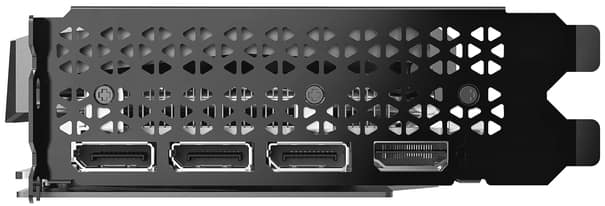
It definitely doesn’t perform as well as the RTX 2060 in terms of performance. Although it has somewhat stronger raster performance than the GTX 1660 SUPER, the ray tracing and DLSS capabilities are really what set this card apart. Personally, I believe that the DLSS is a helpful tool that may improve your gaming experience even if you don’t play with ray tracing enabled.
Although the final retail pricing ($249 or 1200MYR) may not be as inexpensive as the MSRP claimed during the official introduction, this card’s 8GB RAM, apparently respectable ray tracing performance, and DLSS already make it superior to the RX 6500XT, which is roughly the same price. Overall, for those looking to upgrade from cards like the GTX 1050 Ti or below, it’s a really good entry-level 1080P ‘RTX ON’ graphics card.
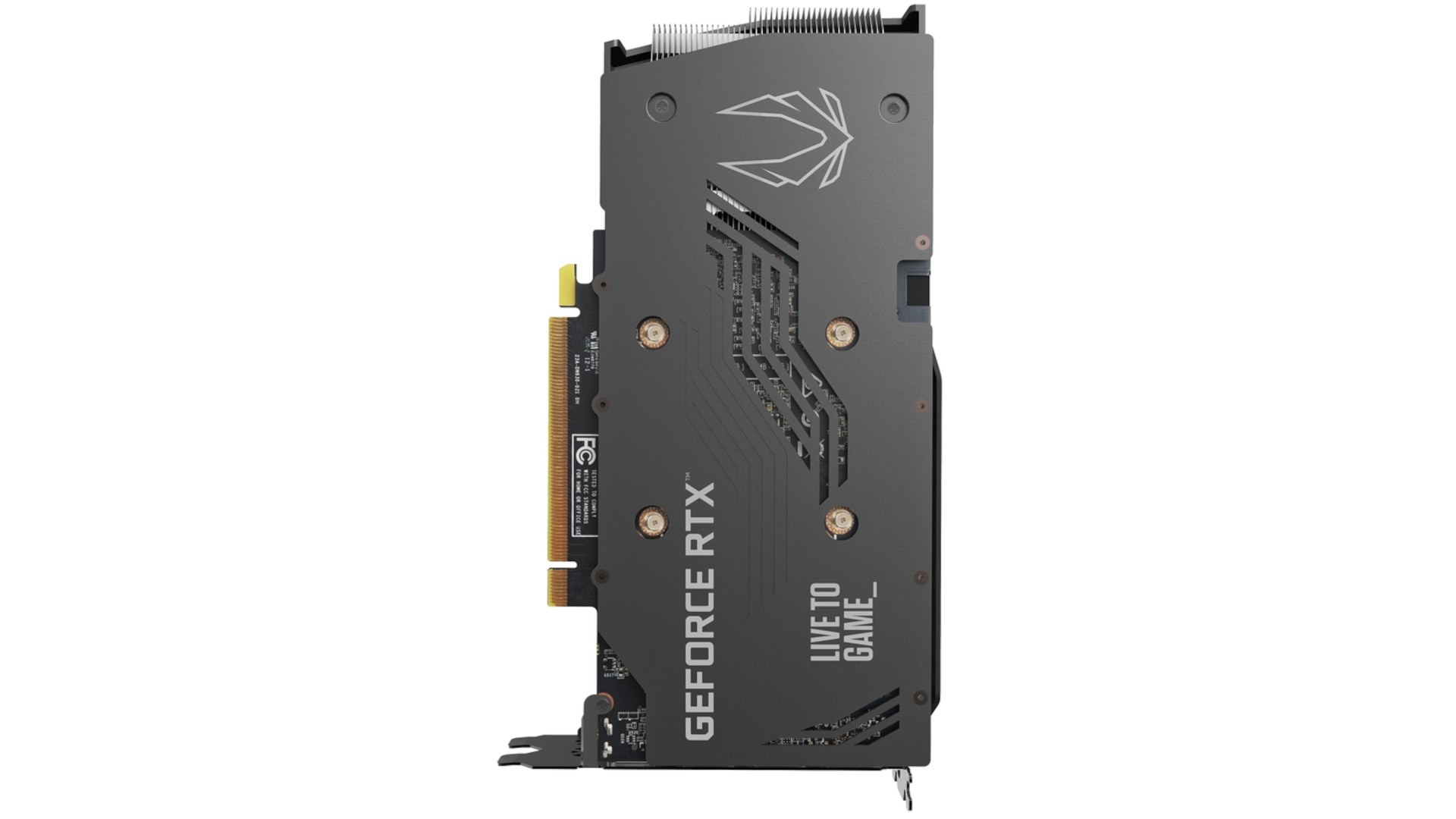
Keep an eye on the website for a future post that compares a 20xx series card to a 30xx series card if you are still using previous-generation hardware.
The ZOTAC Gaming GeForce RTX 3050 Twin Edge OC is a mid-range graphics card that offers a balance of performance, features, and affordability. Let’s explore its pros and cons in detail:
Pros:
- Ray Tracing Support: The RTX 3050 Twin Edge OC features dedicated hardware for real-time ray tracing, allowing for more realistic lighting, reflections, and shadows in supported games. This feature enhances visual fidelity and immersion, providing a more immersive gaming experience.
- DLSS Technology: NVIDIA’s Deep Learning Super Sampling (DLSS) technology is supported by the RTX 3050, allowing for improved performance and image quality in compatible games. DLSS leverages AI to upscale lower-resolution images, resulting in smoother gameplay at higher frame rates.
- Ampere Architecture: Built on NVIDIA’s Ampere architecture, the RTX 3050 offers improved performance, efficiency, and features compared to previous generations. The architectural enhancements translate to better gaming performance and support for advanced technologies.
- Efficient Cooling Solution: The Twin Edge OC variant comes equipped with an efficient cooling solution, featuring dual fans and heat pipes for optimal thermal management. The improved cooling performance helps maintain lower temperatures under load, ensuring stable and consistent performance during gaming sessions.
- Factory Overclocked: The Twin Edge OC model comes factory overclocked out of the box, providing a boost in performance compared to stock configurations. The pre-overclocked GPU delivers higher frame rates and responsiveness, offering better gaming performance without the need for manual overclocking.
- Compact Form Factor: The ZOTAC RTX 3050 Twin Edge OC features a compact design, making it suitable for small form factor builds and space-constrained systems. Despite its smaller size, it offers respectable gaming performance, making it ideal for compact gaming rigs.
- Multiple Display Outputs: The graphics card is equipped with multiple display outputs, including DisplayPort and HDMI connectors. This allows users to connect a variety of displays, including monitors, VR headsets, and multimedia devices, offering flexibility in setup configurations.
- Affordable Pricing: The RTX 3050 Twin Edge OC offers a balance of performance and affordability, making it an attractive option for budget-conscious gamers. It provides access to ray tracing and DLSS technology at a relatively affordable price point, offering excellent value for money.
Cons:
- Limited VRAM: The RTX 3050 comes with 4GB of GDDR6 memory, which may be insufficient for running games at higher resolutions and detail settings. While it can handle most modern games at 1080p, users may experience limitations when gaming at higher resolutions or with demanding texture packs.
- Lower Performance in Ray Tracing: While the RTX 3050 supports ray tracing, its performance in ray-traced games may be limited compared to higher-end RTX models. Users may need to lower detail settings or resolution to maintain playable frame rates in ray-traced titles.
- No SLI Support: Like many mid-range graphics cards, the RTX 3050 does not support NVIDIA SLI (Scalable Link Interface) configurations. Users looking to leverage multiple GPUs for increased performance will need to consider alternative options.
- Potential Cooling Noise: Under heavy load, the fans on the Twin Edge OC variant may ramp up to maintain optimal cooling, resulting in increased noise levels. While the cooling solution is effective, it may be audible during intensive gaming sessions, potentially affecting the user’s gaming experience.
- Limited Future-Proofing: As a mid-range graphics card, the RTX 3050 may lack support for future technologies and features introduced in newer GPU architectures. While it remains capable of running current games, users may miss out on advanced features introduced in subsequent GPU generations.
- Availability and Pricing: Due to supply constraints and high demand, the RTX 3050 may be subject to availability issues and price fluctuations. Users may need to wait for restocks or pay inflated prices from third-party sellers, potentially impacting the overall value proposition of the graphics card.
- Power Consumption: While the RTX 3050 is relatively power-efficient compared to higher-end GPUs, it still consumes a significant amount of power under load. Users with lower-wattage power supplies may need to ensure adequate power delivery and cooling to prevent performance throttling.
Overall, the ZOTAC Gaming GeForce RTX 3050 Twin Edge OC offers a compelling combination of performance, features, and affordability, making it a suitable choice for budget-conscious gamers seeking access to ray tracing and DLSS technology. Despite its limitations, it delivers respectable gaming performance and value for money, making it a worthy investment for entry-level and mid-range gaming systems.
ZOTAC Gaming GeForce RTX 3050 Twin Edge OC on Amazon:
ZOTAC Gaming GeForce RTX 3050 Twin Edge OC
-
Performance - 97%97%
-
Price - 96%96%
-
Value - 97%97%

